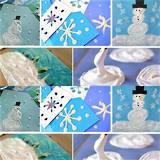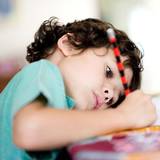Shop
02016
https://www.under5s.co.nz/shop/Hot+Topics+Articles/Toys+Books+Play/Benefits+of+play/Using+natural+resources+for+learning.html
Using natural resources for learning
|
Over the years as our living space has decreased and our use of smart phones, tablets and television has increased, children are now often missing out on connections to nature. In our hectic world, children need experiences that were such a big part of their parents’ childhood. Check out these natural resource activities to try with your little ones.
|
You might also be interested in ...
How to make snow paint
Make your own snow paint at home with the kids. Such a fun winter activity for toddlers and preschoolers that you can do inside when it's wet and cold. An easy paint recipe you can adapt for all sorts of snow and winter creations.
Encouraging your preschooler to read & write
Why is it that some children enjoy writing and drawing and for others it’s a struggle to get them to even pick up a pencil? Children are unique and each has individual ways in which they learn. There are many different learning styles and many children lean towards one, while also being a combination of others.
join usJoin us on social media for all our latest news. |
sign upSign up and receive our latest newsletters. |
|







Over the years sections have got smaller and apartment living has increased, add this to a world that is increasingly focused on smart phones, tablets and television and the outcome is children are missing out on connections to nature.
Think back to your own childhood and the pleasure you got from being outside. Perhaps you made mud pies or igloos from lawn clippings. Maybe you collected flower petals and added them to water to make an ‘interesting’ perfume scent!
In our hectic world, children need those natural experiences that were such a big part of their parents’ childhood.
Using natural resources for learning
1. Benefits of using natural resources
There are so many natural resources you can use to help enhance your children's learning and they come with many long term benefits too.
For instance:
2. Collecting natural resources
Involve your child by giving them their own kete to collect natural resources in.
Plan some outings to beaches, parks and bushes as well as your own back yard and neighbourhood.
You can also get items from your local hardware/garden store such as river stones, bags of shells and sand.
Natural resources to collect could include shells, feathers, driftwood, seaweed, bark, hay, pinecones, rocks/pebbles, leaves, flowers.
Collecting is part of their learning. Your child is learning about sorting, grouping and learning new words to describe what they have found.
3. 15 Natural resource activities for kids to try
Here are some natural resource activities and ideas to try with your toddler or preschooler.
Not much space? No worries! Large trays and buckets with handles can be used indoors and out.
1. Create your own natural dinoworld
Collect up your child’s dinosaurs and use sand, pebbles, water and leaves to create a prehistoric dinoworld.
Develops imagination and language skills during play.
2. Make some 'natural' cupcakes
Put out some paper cupcake cases and then provide coloured clay or play dough for the cake.
The toppings and candles can be your sticks, leaves and shells.
Develops dexterity in the hands and fingers.
3. Play matching games
Put out a selection of shells or stones for your child to match by finding ones of the same type.
Alternatively take photos of different shells, feather and leaves and then your child can match the photo to the real object.
Develops math skills.
4. Set up a letter hunt
Hide magnetic letters in containers of sand. You can write the letters on a large sheet of paper so when they find each letter they can put it next to the written letter.
Literacy – letter recognition.
5. Find new ways to write their name
Get your kids to write their name in the sand or mud with sticks.This is great for children who are reluctant to use paper and pencils.
Literacy – name recognition.
6. Make your own farmyard
Add your own toy animals to hay and grass clippings and make your own farmyard using natural materials.
Opportunity to talk about animals and how they live or where our food comes from, such as eggs and milk.
7. Put together a treasure basket
Fill a cane low basket with feathers, large pinecones, large smooth pebbles, bunches of herbs and fresh, dried flowers and other natural objects.
Great for heuristic play.
8. Make your own natural jewellery
Threading shells or wood with a hole drilled through the middle into twine.
Enhances hand eye coordination.
9. Make some play dough
Add natural resources to your play dough such as dried herbs, lemon zest or lavender.Describe how they smell including with your eyes closed.
Sensory learning.
10. Get out the magnifying glass
Use a magnifying glass to look at leaves and feathers. What new things do you notice?
Develops thinking and language skills. Observation skills.
11. Create your own natural prints & rubbings
Press leaves and shells into dough or clay or place under paper and do rubbings with a pencil.
Learning about shape, size and patterns.
12. Make your own pet rocks
Get your kids to choose a rock, name it and decorate it using other natural materials or items such as wool and craft eyes to make their own unique ‘pet’.
Enhances imagination.
13. Make some number cards
Cut out numbers or letters on card and then cover generously with craft glue.
Then your toddler or preschooler can cover the cards with sand, shells, dried flowers and feathers.
Numeracy skills. Tactile.
14. Create your own baby's mobile
Make a mobile to go over your baby's change area with driftwood and shells. Secure strongly.
Eye health and development.
15. Let your kids use their imagination
Let your kids guide you. Provide all the resources or natural baskets at your child’s level and see what ideas they have.
They may mix them with their own traditional toys such as cars and dolls. Children usually have the best ideas!
Following children’s interests.
Safety note
Natural does not always mean non-toxic or safe to use. Ensure plants are not poisonous and be aware of any choking hazards. Shallow water is still a risk to young children so empty this out when you have finished.
More kids articles to enjoy
Source: This article has been written by Creators, a nationwide service offering quality home-based care and education. Creators are passionate about seeing every child’s unique talent being recognized and nurtured.
Image source: babycinokids